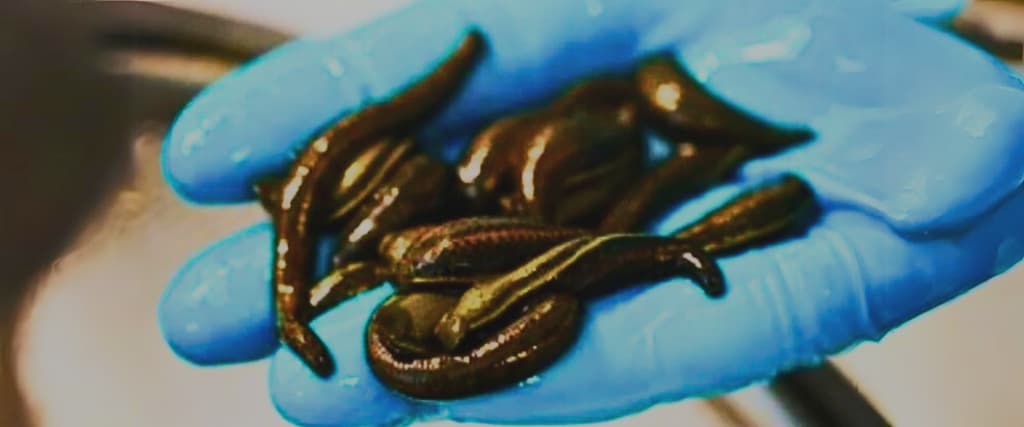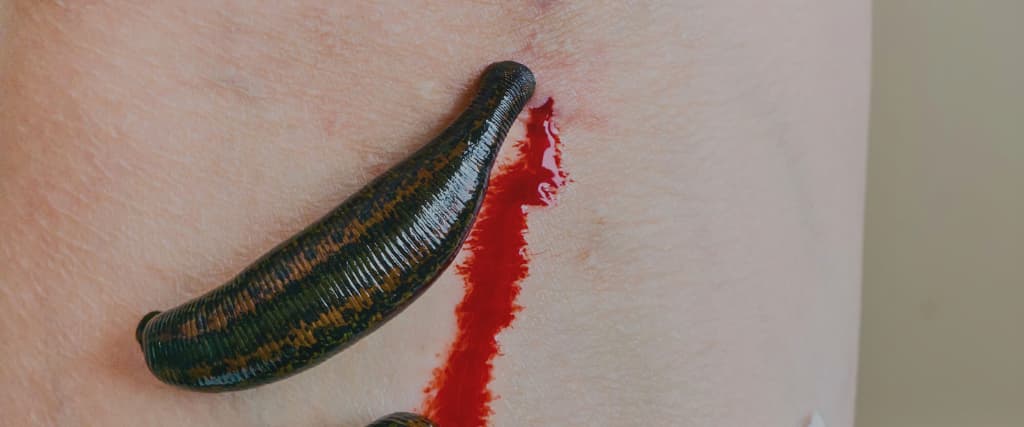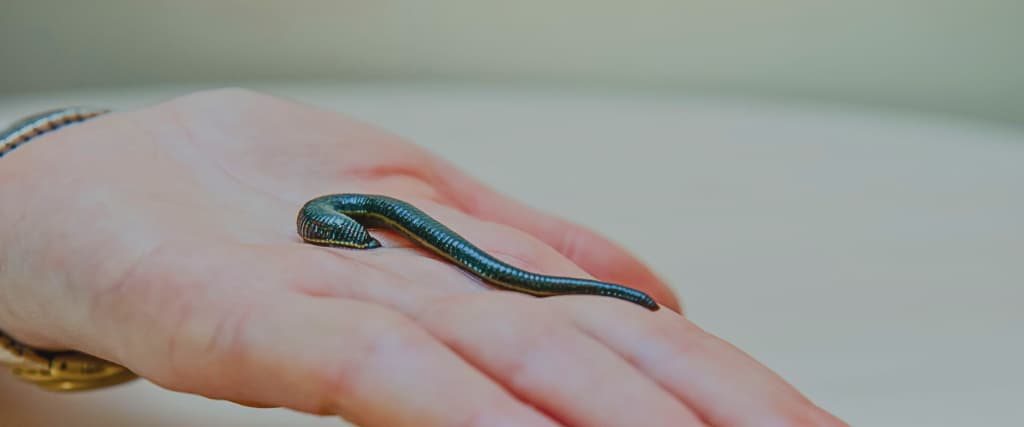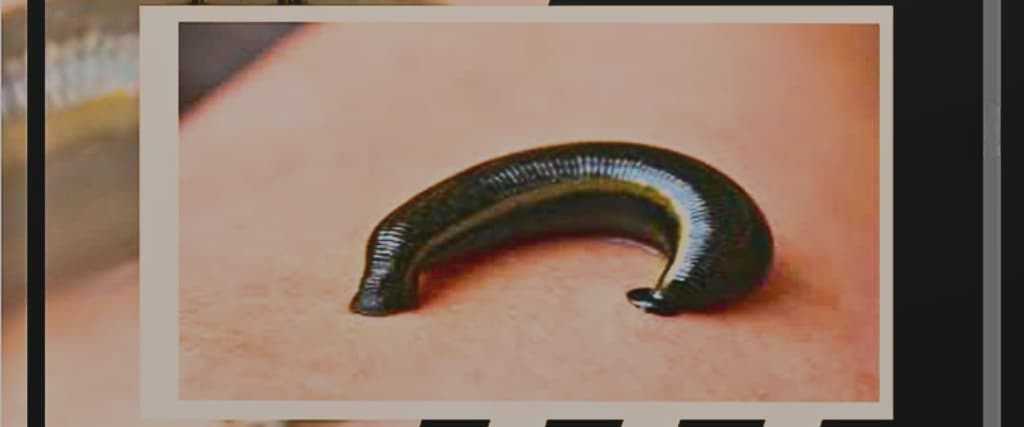The weather has always been notoriously difficult to predict.
Over the years there have been many notable incidences of weathermen incorrectly forecasting weather patterns. This includes the notorious occasion in the UK in 1987, when the BBC Weatherman Michael Fish dismissed speculation of an imminent hurricane, only for ‘The Great Storm’ to subsequently cause 18 deaths, over 15 million trees to fall and even a ship to capsize!

Whilst weather is a complex phenomenon which can vary drastically over a very short period of time, we as a society have done our best to interpretate it, using high tech meteorological equipment.
Back in the day though, they didn’t have this technology. So they had to rely on other methods of detection. One of which famously involved using leeches.
The use of Leeches to predict weather
Back in the late 1800s animals were often used as barometers of the weather.
It was noted for instance that frogs seemed to croak when storms were approaching. While ants would scurry around at a frenzied high speed, birds would rush back to their nest and wild animals also seemed to have a latent ability to ascertain changes in weather patterns.

And then there were leeches.
As a doctor in mid-1800s England, George Merryweather, worked a lot with leeches for bloodletting. A common practice amongst the medical community, leeches had been used since ancient Greek and Egyptian times, as a way to initiate blood flow, or remove blood from a localised area, in an attempt to prevent illness and cure disease.
As a result he was able to study the behaviour of leeches and noticed that it tended to change markedly as and when the weather did.
On a normal sunny day they tended to sit stoically at the bottom of their jars. However in the short period of time before a storm hit, he regularly observed them getting agitated and moving out of their water.
He even noted they would curl themselves into ball shapes and remain that way until the storm passed, at which point they would return to a more relaxed state.
Creation of the Tempest Prognosticator

As well as a doctor, George Merryweather was also a bit of an inventor and the consistent reaction of the leeches gave him an idea.
He constructed a device he officially called an ‘Atmospheric Electromagnetic Telegraph, conducted by Animal Instinct’. But more frequently referred to it as a tempest prognosticator. The word tempest relating to storm, and prognosticator meaning someone who predicts the future.
Overall, the tempest prognosticator was made up of 12 pint glass bottles, each one of which contained a live leech inside it. The bottles were all suffused within an inch and a half of water and topped with a piece of whalebone in the neck. The whalebone was also linked to a small hammer which could strike a metal bell.
As storms approached the leeches would begin to make their way out of the water and on toward the necks of all the bottles. Doing this would dislodge the individual piece of whalebone attached to the bottle and thus facilitate the bell to strike.

If the bell would ring several times in rapid succession he considered this to be a clear sign that the storm was imminent.
Merryweather was somewhat of a quirky fellow, referring to the leeches as the ‘jury of philosophical counselors’. He even designed the machine to be circular and incorporate clear glass jars, so the leeches would not be subjected to ‘the affliction of solitary confinement’.
After spending the best part of a year creating the tempest prognosticator he wrote a letter to the Philosophical Society advising them of his weather-predicting leech device. He also lobbied the English government in an attempt to get them to use his design along the coastline to assist boats and other sailing vessels.
Sadly for Merryweather, the English government choose to throw their weight behind the invention of a ‘storm glass’, which was a liquid-filled jar that produced copious crystals whenever storms were in the vicinity.
Although the invention of the tempest prognosticator never gained traction, it did at least perform a secondary role of housing the leeches for medical purposes, when they weren’t predicting inclement weather.
For those interested, there is now a pretty cool replica of the Merryweather’s machine on display at the Whitby Town Museum in Yorkshire the United Kingdom.
All About Leeches

In case you were wondering, leeches are a segmented parasitic or predatory worm. Closely related to the earthworm, they possess soft, quite muscular and segmented bodies which can contract and lengthen as required. One of the main differences between the two is that leeches have suckers at both ends of their body.
Overall, there are more than 700 species of leech worldwide. Rather interestingly, all leeches have 32 brains, 34 body segments and 10 eyes.
They are found in every continent in the world except Antarctica, with the large majority of them tending to reside in freshwater habitats. Although some species can also thrive in marine or terrestrial environments.
The best-known species is probably the Hirudo medicinalis, which is most commonly referred to as the medicinal leech.
Other Uses for Leeches

If the use of leeches to predict the weather came as a surprise to you, then you will also be intrigued to discover, no doubt, that leeches have also been used over the years for a range of other purposes.
For instance, some people use them as fishing bait, as they have proved to be excellent at catching smallmouth bass, largemouth bass, walleyes, panfish and catfish.
Also use of leeches for the treatment of osteoarthritis is being investigated, though this is still very much in the development and testing phase.

One of the most fascinating uses of leeches however reputedly took place in the Middle Ages. When women who had previously had sex before marriage but wanted to give the impression they were still virgins on their wedding night, apparently adopted the act of placing a leech on their labia.
This cunning practice was intended to form a crust, after blood had been sucked from it, that would replicate the act of her hymen tearing the first time she had intercourse as a married woman.
